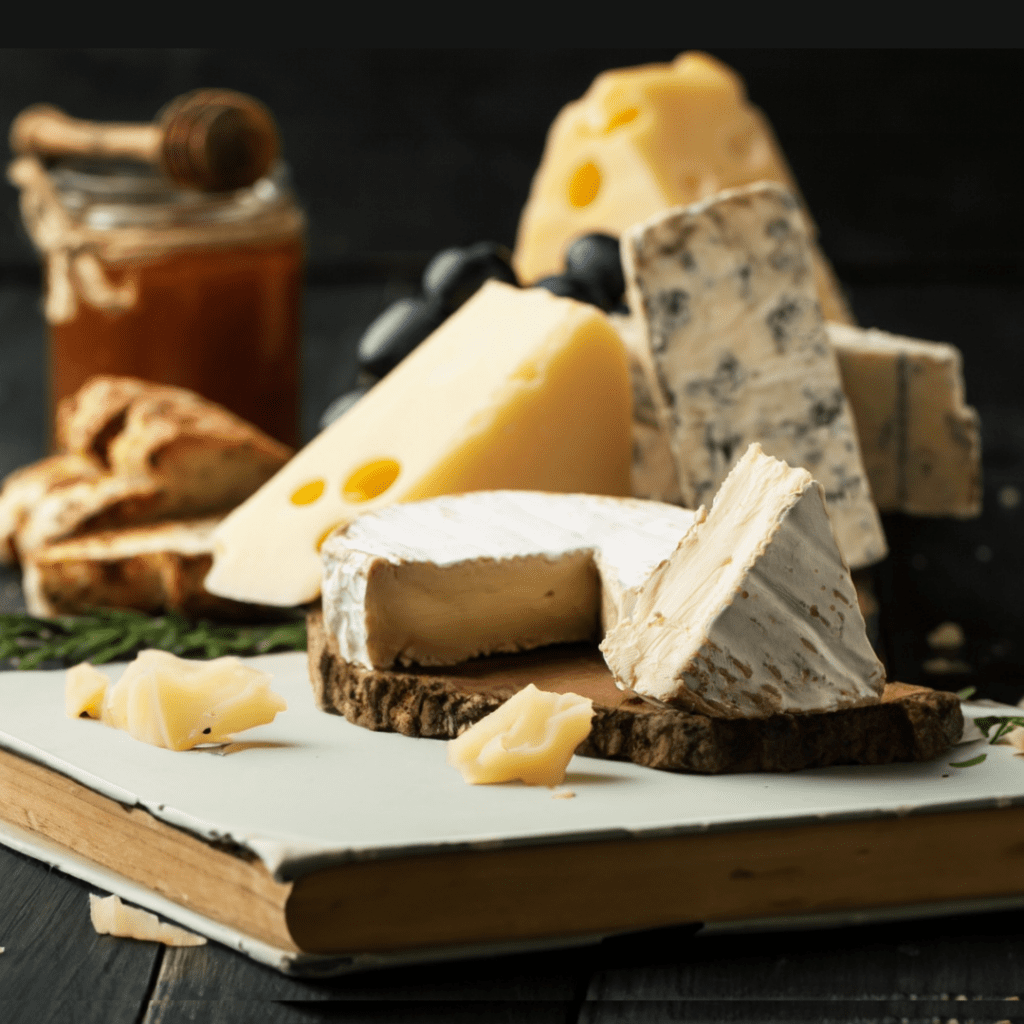Cheese is a diverse and delicious food loved by many around the world. However even for the seasoned cheese lover, sometimes, with its moulds and rinds and foreign names, it can be just a little intimidating.
But it’s just food, food for the soul, and one of the oldest foods in the world. Whether you’re a cheese connoisseur or a relative newbie, this quick guide will help you understand and appreciate the wonderful world of cheese.
Cheese Categories
Cheese can be broadly split into four main categories:
- Fresh & Soft Cheese: At its most basic, this is fresh curd. They are generally soft and higher in moisture, last from a few days to few weeks, and are milky to yoghurty in flavour.
- Cured Cheese: Cheese can be cured with salt, heat or acidity to change texture and flavour. Examples include feta, halloumi and mozzarella
- Ripened Cheese: Ripening changes the texture and flavours through fermentation, extending the life of the cheese up to 3 months, sometimes longer. There are three classes of ripened cheese
- External mould ripened cheese: the cheese softens from the outside to the centre, like brie and camembert
- Internally mould ripened cheese (blue mould): the blue ripening moulds are within the cheese, like stilton or Roquefort
- Washed rind cheeses:These are powerful, orange, smelly, sticky cheeses, like Epoisses and Morbier.
4. Aged Cheeses: There is a vast variety of aged cheeses. Some are eaten fresh around 1 month and are barely indistinguishable from dry fresh cheeses, others like cheddars and goudas last for months and are the most popular cheeses in the world. The oldest cheeses like parmesan are aged cheese, and can mature over three years. I have tasted Italian cheeses over ten years old.
Aged cheese falls into 6 main make styles:
- Crumbly: these are shorter life high acid cheeses like Wensleydale and Caerphilly
- Hard British: long life savoury moderate acid cheese that peak around 11-15 months, such as Cheddar and Red Leicester
- Hard European: long life low acid sweeter cheeses including manchego and Ossau Iraty
- Gouda Style: cheese made using a specific curd washing technique, giving it a signature caramel note. Gouda is the best example
- Alpine (Swiss) style: very large smooth curd cheeses that age well up to 24 months. Their signature is balanced sweet, savoury and salty notes with some floral and fruity flavours. Examples include gruyere and emmental
- Grana style: dense hard old cheese with grainy (grana) textures, including Parmesan (Parmigiano Reggiano) and Grana Padano. Sweet and savoury and often with light tropical notes
Cheese with Flavourings
Many cheeses are flavoured by pressing, soaking, mashing or slicing the cheese with natural or artificial additives. There are classics like Gouda with Cumin that are hundreds of years old, or more modern cheeses like Banoffee Pie Cheddar. Some of these are a bit concerning, others well worth the effort.
As a rule of thumb, if the additive dominates the cheese, it is probably more a dessert than a cheese. But if you like it, go for it. More is more where cheese is concerned.
Cheese Pairing
Pairing cheese with complementary foods can be fun. Common accompaniments include fruits, nuts, and crackers or bread. I have a soft spot for honey and chocolate. Experiment to find your favourite combinations.
Top tips:
- Balance the tastes (sweet, salt, acid, bitter and savoury)
- Enhance the flavours (fruits, mushrooms, herbs etc)
- Drinks with cheese from the same region are usually your best bet
Cheese Storage
Keep it cold and air tight. I do not like waxed paper, preferring clingfilm. Many people say this is heresy, but I’ve been a cheesemonger for 20 years and I know from bitter experience it works better.
If you have environmental concerns, as we all do, put the cheese in an air-tight box instead, like a Tupperware. That’s what you’ll find in my fridge.
Serving Temperature
Serve cheeses around 18-21oC. Too cold and it won’t taste of much, too warm and it sweats the flavours go awry.
Cheese Tools
Dr AI says – “Invest in some basic cheese tools: a cheese knife, cheese board, and a cheese grater for hard cheeses. These will make serving and enjoying cheese easier.”
I say get yourself some funky cutlery that looks cool. It’s just more fun.
Cheese Tasting
When tasting cheese, we look at Dairy Notes, Tastes and Flavours. Every cheese style has signature dairy notes and tastes. Flavours are the extra gift of the talented cheesemaker.
- Dairy Notes: from milk to cheddar, via yoghurt and fudge, dairy notes will usually be the main flavour of the cheese.
- Tastes: Sweetness, Saltiness, umami/savoury notes, bitterness and acid/sour. These are the five Tastes, and will formulate around 80% of the taste of the cheese.
- Other Flavours: these will be more subtle and turn the cheese from simple to complex. The complexity of a cheese is often what sets apart a run-of-the-mill cheese from a quality cheeses. Savor the different notes, discuss them with the table and look out for the hidden and funky.
Cheese Etiquette
It is polite to say – Respect other diners by not double-dipping and using separate utensils for communal cheese plates. Try a little bit of everything, and don’t overload your plate.
I say – f** that. it’s your cheese. Do what you like with it.
If you and your mates want to double dip – you are all consenting adults. I know a lot of cheesemakers who complain people, especially chefs, are too respectful of their cheese.
Cheesemakers actively encourage you to explore, innovate and give anything a try. Etiquette is for dogmatic know-it-alls who want to repress your inner cheese lion.*
I hope this guide has given you an insight into our wonderful world of cheese.
There are only two rules, and that is one rule – experiment and enjoy yourself.
It’s an adventure, starting at a deli-counter near you!



